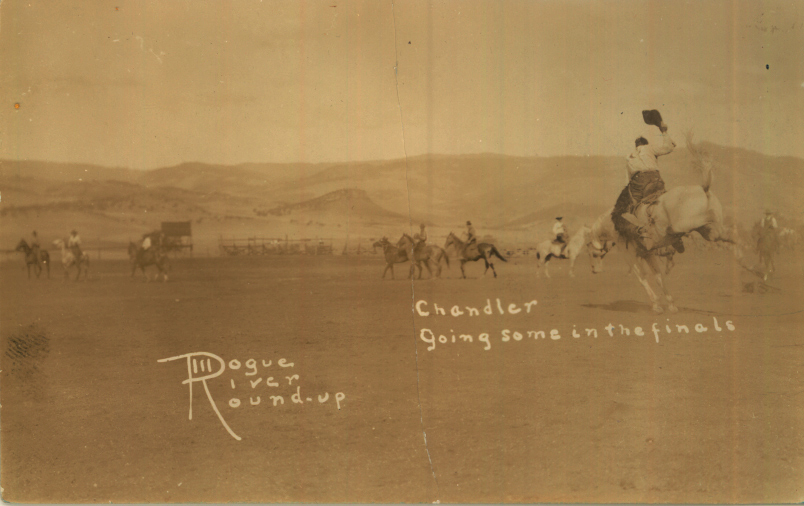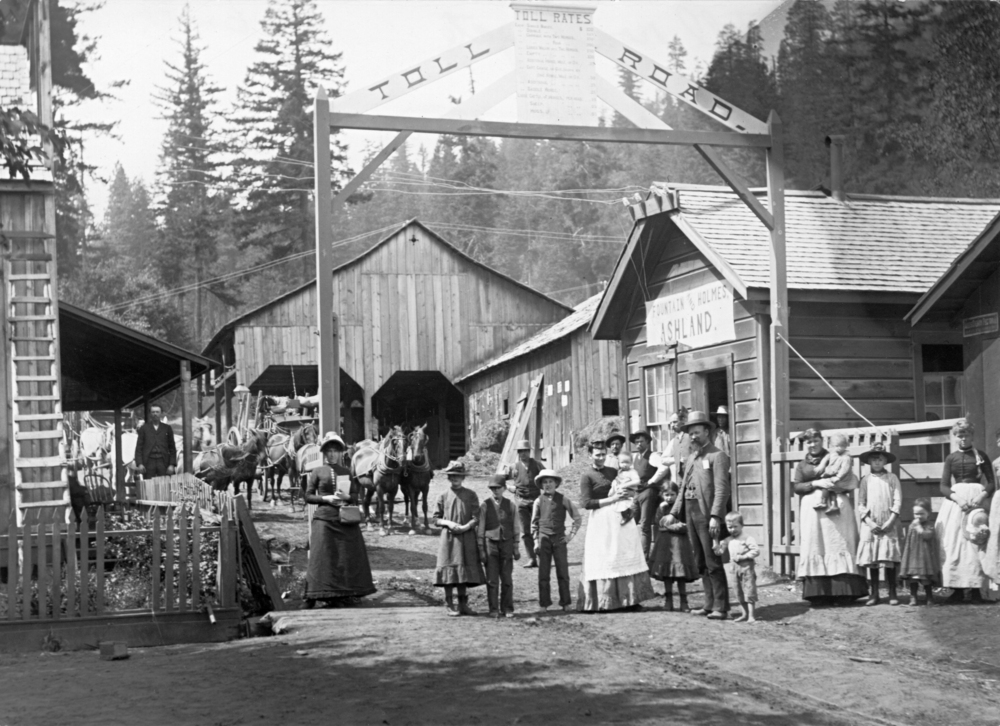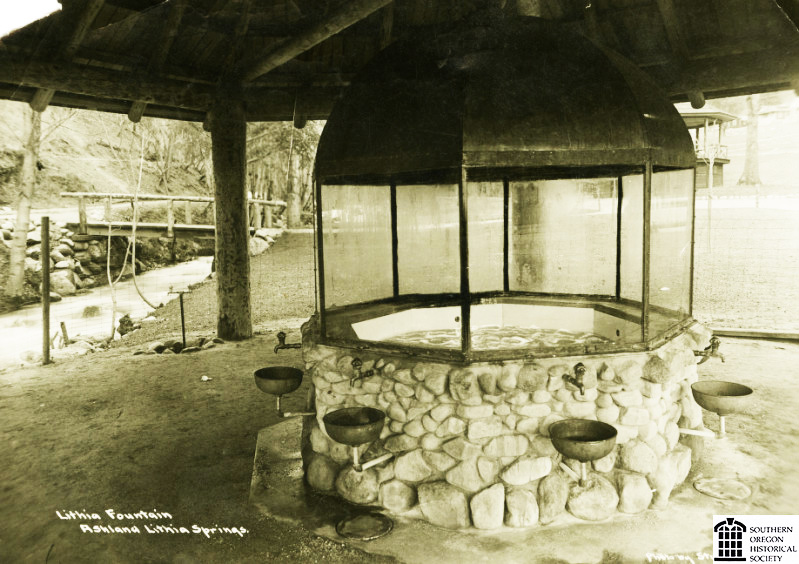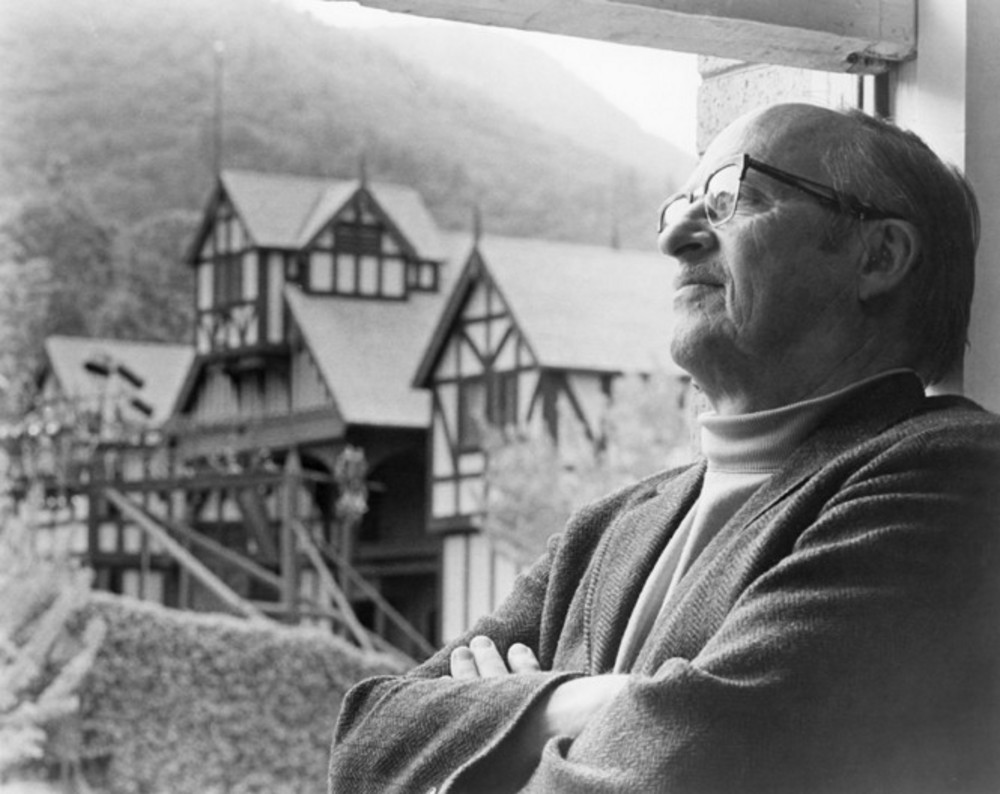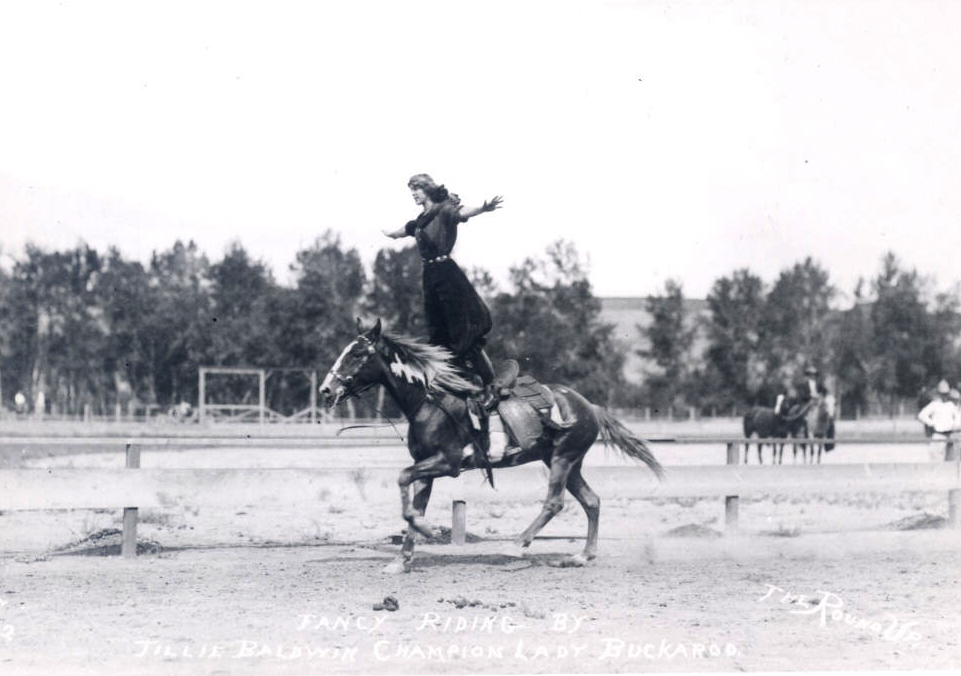In 1916, Ashland dedicated its much-expanded Lithia Park, a ceremony somewhat upstaged by the wildly popular Rogue River Round-Up. In the park dedication brochure for the Fourth of July celebration that year, it was the rodeo that received top billing.
Buckaroo events were enormously popular, resulting in overflow crowds squeezed into a grandstand designed for 10,000. Another 3,000 eager spectators were forced to stand at the rodeo grounds just off East Main Street at the Butler-Walker ranch. Nearly 80 contestants competed for purses, varying from $10 cash to a $150 saddle.
Reflective of the times, Native American stereotypes permeated the Official Program descriptions of several contests and events. Special contests included “Pioneers’ Roping” for those over 50 years of age, “Lady Bucking Horse Riding," and "Squaw Pony Races.” Evening events included an "Indian War Dance," a stage hold-up, and "the most realistic Indian massacre ever staged." Of course, the usual bucking horses and trick-riding could be enjoyed from the fifty-cent seats as well.
Even more financially successful the following year, the 1917 Round-Up featured Jackson Sundown, a Nez Perce who had won prizes for his skill at the Pendleton Round-up; John Spain, who could bulldog with only one arm and his teeth; and Lee Caldwell, winner of thirty-five first-prize saddles. Katherine Wilkes, a Cheyenne, held a world record as a bucking-horse rider; and Josephine Sherry, the best-known woman trick rider in the country, competed as well.
The Rogue River Round-Up Association was unable to match Pendleton's success of an annual stand-alone event. Mostly tied to 4th of July celebrations, Ashland rodeos were discontinued and re-started a number of times into the 1950s.
-
![Rogue River Roundup postcard, 1910s-1920s.]()
Rogue River Roundup, postcard of, color.
Rogue River Roundup postcard, 1910s-1920s. Courtesy Jeff LaLande
Related Entries
-
![Ashland]()
Ashland
Ashland, a city of 21,360 people in Jackson County, is situated in the …
-
![Lithia Park]()
Lithia Park
Lithia Park in Ashland is a good example of what Fredrick Law Olmsted c…
-
![Oregon Shakespeare Festival]()
Oregon Shakespeare Festival
The Oregon Shakespeare Festival (OSF), under the leadership of Angus L.…
-
![Pendleton Round-Up]()
Pendleton Round-Up
The Pendleton Round-Up began in September 1910 as a frontier exhibition…
Related Historical Records
Map This on the Oregon History WayFinder
The Oregon History Wayfinder is an interactive map that identifies significant places, people, and events in Oregon history.
Further Reading
Lewis, Raymond. "The Greatest Fourth of All." The Table Rock Sentinel, May 1987.

